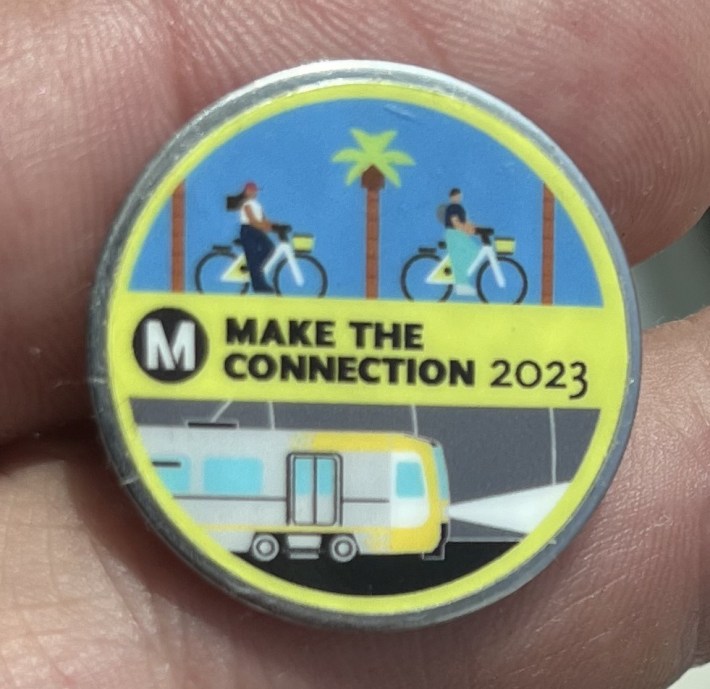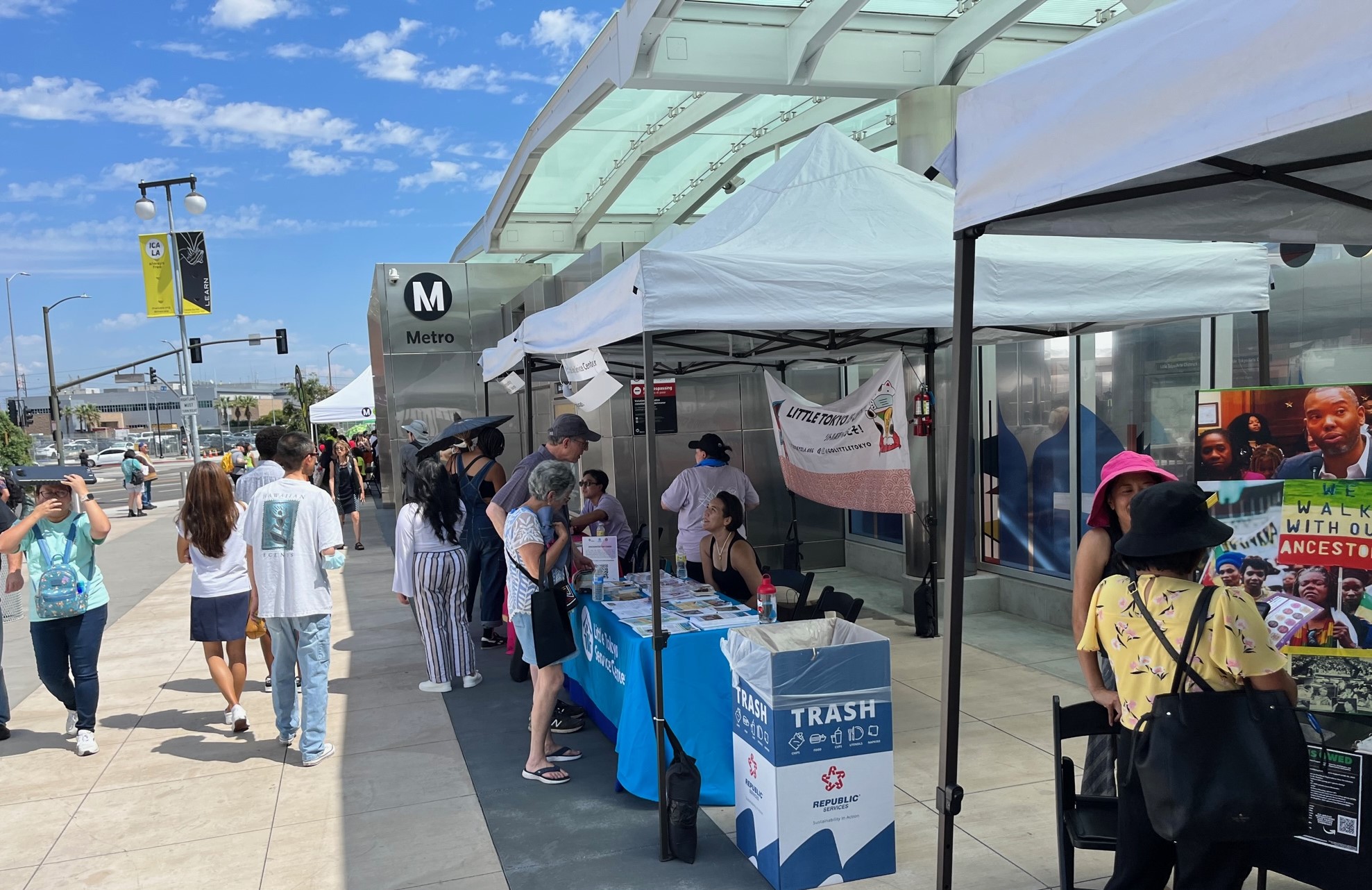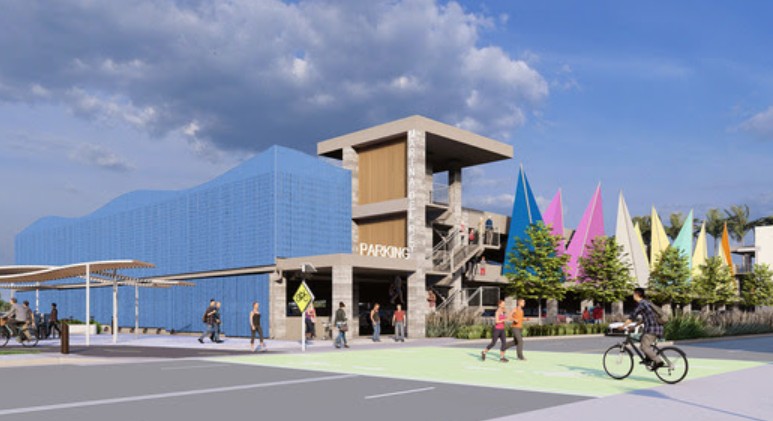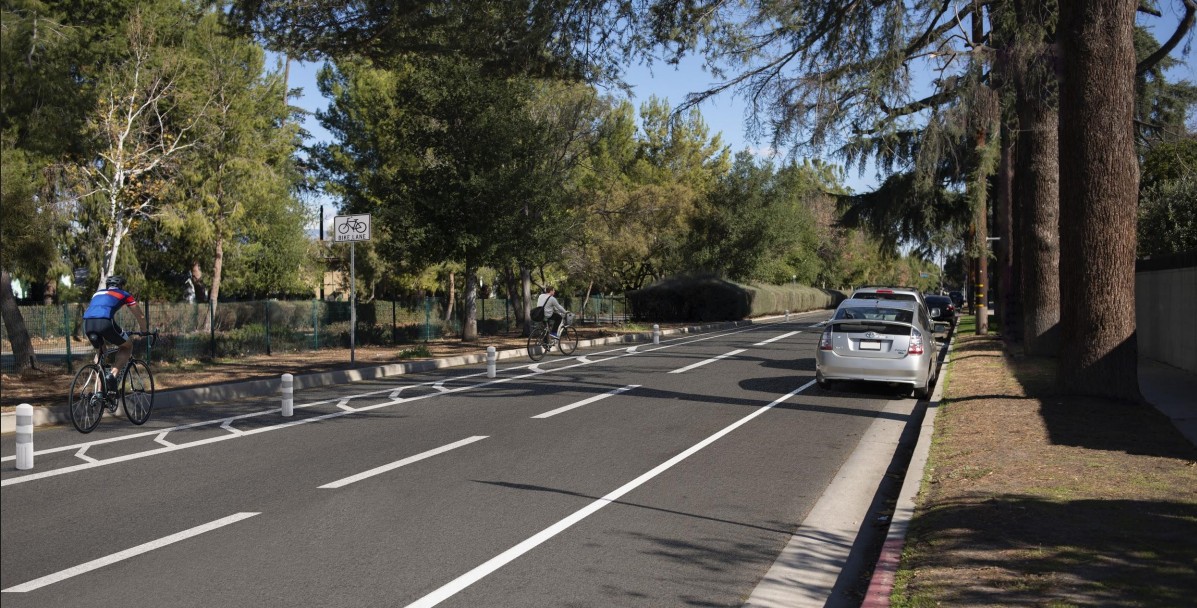Like many people around Los Angeles, I was excited about the opening of the Regional Connector. Like those of us who still drive sometimes (this is L.A., after all), but look for opportunities to do it less, the prospect of a better transit experience is an enticing one. I was driving one day from the Arts District to Union Station and noticed something odd. Construction was wrapping up around the new Little Tokyo Station, and with the barriers removed the basic geometry of the streets around it seemed the same as it was years ago. Remembering the walk across Alameda from the old station to Little Tokyo, I couldn’t understand why nothing was done in anticipation of the many new Metro riders who will surely be walking, biking, or connecting to buses at the new station.
In fact, things were supposed to be done: the $30 million Eastside Access Improvement Project, a package of bicycle and pedestrian improvements around Little Tokyo. At the 2021 groundbreaking ceremony, Metro CEO Stephanie Wiggins promised that the project would provide “more access, more connectivity, and a safer pedestrian environment than when we started Regional Connector construction so many years ago.”
Soon after I saw Streetsblog L.A. coverage that the bike lanes and other improvements that were promised, approved, and funded were severely cut back or not built at all, without any justification or apology. Think about all the steps that go into a typical public construction project: years of planning, approvals by various agencies, scoping, public outreach, bidding on construction contracts, procurement, clearances, construction, inspections, and final project acceptance. How can half of a $30 million project just vanish?
Unfortunately, this is only the most recent, and uncharacteristically controversial, example of a misallocation of public funds and priorities at Metro. Metro has cut back or rendered useless many walking/biking aspects of its projects. Taken together over time, this results in a subtle diminishing in quality and respect for the non-motorist, while car-oriented aspects of a project - driving lanes widened, sidewalks narrowed - are just as subtly enhanced.
Given how small the pedestrian and bike improvements were compared to the mega Regional Connector project, what’s the big deal, you might ask? We’ve got a new tunnel and three new stations that allow for new mobility choices. The positive impact of new transit will be felt far beyond Downtown L.A. itself. And yet there is something just too brazen about the Eastside Access cuts that stands out. Something about the pomp and circumstance of the transit project itself, the grand opening, the speeches, the station parties, that just feel wrong in relation to the silence of the too-wide driving lanes and missing bike infrastructure.
Some transit connection problems stem from officials with the “windshield perspective” - the tendency of many public sector decision-makers (who skew older, live in the suburbs, and don’t use transit themselves) to ignore or even be hostile to the needs of those outside of a car. When they work on new transit or bike infrastructure, they fall short due to their inability to relate to transit users or cyclists.
The newest tendency, perfected by former L.A. Mayor Garcetti and embraced by Metro and the City of L.A., is one I would call “windshield gaslighting”: talk incessantly about fighting climate change, make promises about this “world class” bike lane or that “innovative” monorail project, generate buzz on social media, waste the public’s time with extensive outreach, spend lots of money, and then deliver - what, exactly?
Again, I do not wish to dilute the value of the Regional Connector itself - it’s an engineering marvel that will support millions of car-free trips every month. But if L.A. County residents are to spend billions of their sales tax dollars on transit infrastructure, they deserve to have convenient and safe access to those facilities without having to drive.
To point out the obvious: transportation works best when there exists a dense and continuous network of connections, creating a multiplier effect. No matter your mode of travel, you are a pedestrian or cyclist for some part of your trip. Prioritizing true first mile/last mile infrastructure isn’t somehow optional; it’s how your customers get to and from the transit stations. The death-by-a-thousand-cuts approach Metro takes to its bicycle and pedestrian projects results in missed opportunities to allow vastly greater numbers of people to live normal, productive lives without having to drive everywhere.
For my part, I propose three simple next steps to Metro and the City:
- Provide full transparency on where the project funds really went, including explaining scope of work changes, and documenting change orders;
- Disclose who made the decisions, especially during the period between the grant award and build-out, and propose what new measures are put in place to restore compliance with agency plans and goals in the future; and
- Show how the project will be completed on a new timeline: what other funds Metro will provide or will apply for.
If Metro and the City don’t wish to have a clear and honest discussion about Eastside Access and other projects, advocates could escalate concerns, possibly by formally requesting U.S. DOT investigate how TIGER grant first mile/last mile funds were spent by Metro.
The Regional Connector/Eastside Access debacle is only the latest, and loudest, example of Metro watering down or eliminating the bicycle/pedestrian safety components of a project and shifting bike/ped funds towards extra capacity for motorists. It is a pattern, recurring over many years. But I believe change can happen, if problems are acknowledged and fixed.
If in the future Metro can agree to treat pedestrian and bicycle projects - bringing customers to their own transit facilities, no less - with the respect they deserve, I can foresee a Metro that works to unite blocks and neighborhoods, not send more cars through them. And that would be no less than the sea change Metro sells to us today, in fancy videos and glossy brochures, actually becoming reality.
The author is known to Streetsblog staff, but wishes to keep their identity anonymous as they work for a governmental entity in Los Angeles.








